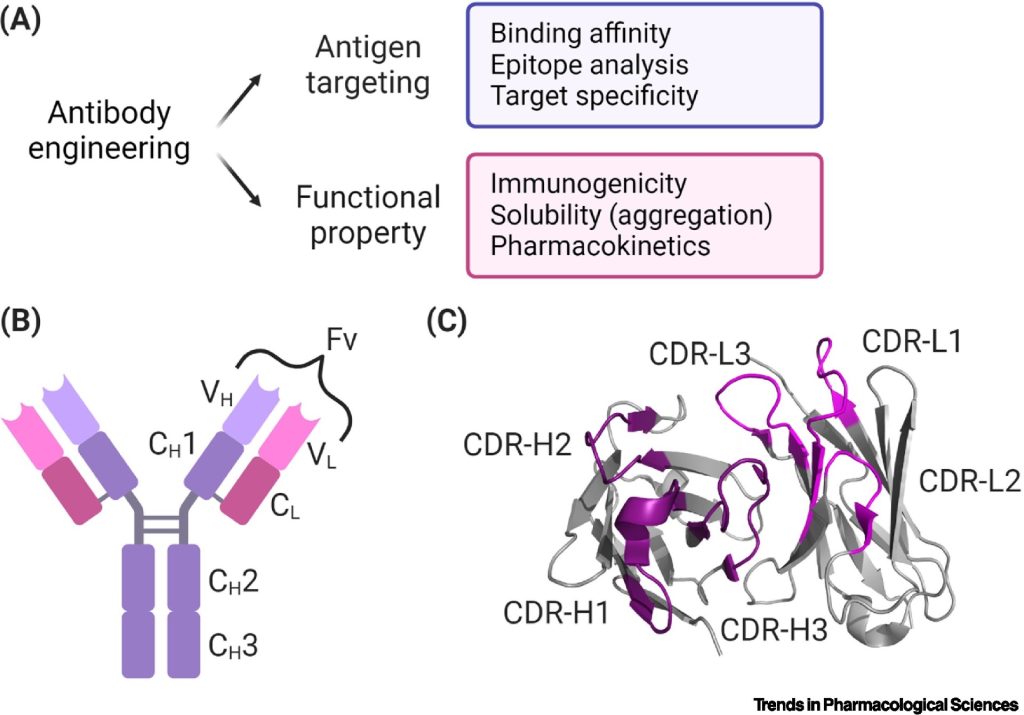Understanding the differences between antibody specificity and selectivity is essential for designing and interpreting antibody-based assays in research for experimental accuracy and data interpretation. Antibody specificity refers to an antibody’s ability to recognize and bind to a particular epitope—a unique part of an antigen that elicits an immune response. The epitope is typically a specific sequence or structural motif on a protein. Specificity is critical for ensuring that the antibody targets the intended antigen without binding to unrelated proteins. Contrary to common belief, specificity is independent of the affinity (the strength of binding) or avidity (overall binding strength due to multiple binding sites) of the antibody.
For example, an antibody can be highly specific for its epitope but may have varying affinity levels. This is particularly evident during antibody production. When an animal is immunized with an antigen, the resulting antibody pool includes antibodies with a range of affinities but similar specificities. The immune system typically favors B cells producing high-affinity antibodies, but low-affinity antibodies can also be highly specific and should not be disregarded during selection.
In practical applications, such as Western blotting, immunofluorescence, and flow cytometry, specificity ensures that the detected signal is from the intended target protein, avoiding false positives from cross-reactivity with other proteins.
Understanding Antibody Selectivity
Antibody selectivity describes how well an antibody binds to its intended target molecule within a complex mixture of proteins, cells, or tissues. Even if an antibody is specific for a particular epitope, it might also bind to other proteins containing similar or identical epitopes, making it nonselective. This cross-reactivity can complicate data interpretation by producing signals from multiple proteins, leading to off-target effects and background noise.
For instance, an antibody raised against a protein involved in signaling pathways might cross-react with other proteins sharing homologous regions. While such an antibody is specific to its epitope, its lack of selectivity could result in misleading conclusions about the signaling pathway components. This underscores the need for antibodies that are both specific and selective, especially in complex assays like immunoprecipitation and chromatin immunoprecipitation (ChIP).
Distinguishing Specificity and Selectivity in Research
To illustrate, consider an antibody developed against a protein involved in cancer research. If the antibody detects a unique epitope present only on the target protein, it is highly specific. However, if this epitope is also found on other related proteins, the antibody’s selectivity is compromised. The antibody may be suitable for applications where broad detection of related proteins is useful, such as pathway analysis, but not for distinguishing between specific isoforms or closely related proteins in diagnostic assays.
Polyclonal antibodies, which consist of a mixture of antibodies recognizing multiple epitopes on the same antigen, provide a practical example of this distinction. These antibodies are not specific because they bind to several epitopes but can be selective if they only target the intended antigen without cross-reacting with other proteins. Polyclonal antibodies are often used in ELISA and immunohistochemistry (IHC) due to their ability to detect multiple epitopes, enhancing signal strength and robustness.
Improving Experimental Outcomes through Antibody Selection
Researchers must carefully evaluate both specificity and selectivity when choosing antibodies for their experiments. This evaluation includes:
- Rigorous Validation: Testing antibodies against a panel of related and unrelated proteins to confirm specific binding to the intended target.
- Functional Assays: Using assays such as competitive binding studies and epitope mapping to determine the antibody’s ability to distinguish between similar epitopes.
- Experimental Context: Considering the complexity of the sample and the presence of potential cross-reactive proteins in the experimental design.
Manufacturers and researchers alike must prioritize these evaluations to enhance the reliability of antibody-based assays. Many vendors provide detailed validation data, including cross-reactivity profiles and application-specific performance metrics, to aid in selecting the most appropriate antibody for each research need.

